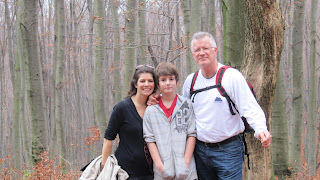My last day in Berlin was last Thursday. I spent all day Wednesday at the Philharmonie, Thursday was my Museum Day. I walked through the Alte Nationalgalerie, the Bode Museum and the new Berlin Jewish Museum. Then, after a call from Gabor, I was able get snuck into to the Philharmonie to see Rattle and the Philharmonic do the Rachmanninof Symphonic Variations, and the Mahler 1st Symphony. Since the concert was sold out, I was in the standing room only section. The sound is great and the view excellent, but all in all, my feet were killing me by the end of the day! Enjoy the pictures and thanks for stopping by.

The only remaining section of the Berlin Wall. It is on the edge of a historical exhibit call the Topography of Terror (look it up online...). The outdoor exhibit is on the ruins of the buildings of the Gestapo, the Nazi Secret Police. The entire area remains flattened (except for the exhibit walkways), and there is no intention of building anything there. So much happened in those buildings that they are keeping the place leveled as a reminder...
The Kaiser Wilhelm Gedächtniskirche (Memorial Church). This is the former iconic symbol of West Berlin. The destroyed church, left unrepaired as a warning. The tower next to it is the new church tower. This is no longer the symbol of Berlin since the wall came down. All the focus has turned eastward to the new (and old) symbol of the city, the Brandenburg Gate.
Another war memorial... This is called the Neue Wache (New Guard). It is a simple square neo-classical building, with an opening in the roof. There is no lighting. The statue is by Kathe Kollwitz, Berlin's greatest woman artist, and a exponent of the Berlin poor. A mother shields her dead son from the elements. The opening above allows the sun, moon, rain or snow to fall on her, so the statue looks different through the seasons. On the floor are the words: "To the victims of War and Violence." It is so stark and simple.

Next to the Neue Wache is the German History Museum. What a great museum. Here is a picture of the Declaration of Independence, translated into German (!) 8 days after July 4, 1776, and sent to the German speaking population of Pennsylvania. A full 1/3 of people from the soon to be Keystone State spoke German. "When in the course of Human Events it becomes necessary for one people to dissolve the political bands which have connected them with another..." becomes, "Wenn es in Lauf Menschlicher Begebenheiten für ein Volk nöthig wird die Politischen Bande, wodurch es mit einem Andern verknüpft gewesen, zu trennen...
Napoleon's Tricorn hat and sword, left behind in his carriage when skedaddled from the scene at Waterloo. Now that's a Spoil of War to brag about!
I. M. Pei added a wing onto the German History Museum. It's cool.
The Alte Nationgalerie. It was closed the last time I was here, and before that it was East Berlin, which I didn't visit. This is a great spot. It is one of the 5 major institutions on Museum Island. This one houses paintings from the Romantic period.
Like this. Caspar David Friedrich: Der Watzmann. Best. Landscapes. Ever.
Old Oak in Snow.
The Lonely Oak. Click on this to see the shepherd and his flock, and the town in the distance.
The Riesengebirge. "Giant Mountains", of Austria.
Böcklin's "The Isle of the Dead."
Menzels's "The Flute Concert". That's Frederick the Great.
Detail.
At the keyboard is CPE Bach and at the right is Frederick's teacher, Ludwig Quantz, listening critically...
The Bode Museum, at the tip of Museum Island. Byzantine, Greek and Roman art and sculpture. It is a great building. I found the building more interesting than the ancient sculptures....
The main Berlin Synagogue. It was burned in the Kristallnacht in 1938, the nationwide pogrom against Jewish shops, houses of worships, and homes. Then it was leveled finally by an bombing raid near the end of the war. This was the largest synagogue in Europe. It was rebuilt in 1966.
"This synagogue is 100 years old and was burned by the Nazis in the Kristallnacht on the 9th of November 1938.
During the 2nd WW it was destroyed in 1943 by a bombing attack.
The facade of this House of God shall remain for all times as a Warning and Remembrance.
NEVER FORGET.
Jewish Community of Greater Berlin September 1966."
Interestingly enough, 1966 was the height of the East - West separation of Berlin. The term "Greater Berlin" clearly implies both east and west.
The coolest museum in Berlin has got to be the Pergamon. It is a museum of ancient Perian, Greek and Roman, buildings. You walk through the rebuilt Gate of Ishtar, and climb the Pergamon Altar steps. This museum is next on the list for refurbishing, so if you go to Berlin go soon. It will be closed for a year or two, soon.
A display of Jewish gravestones from the time of WW I, from the new Jewish Museum. This is a great exhibit, displaying the history of Jewish life in Berlin. Incredible detail and breadth.
Heading to the Philharmonie for the concert. I had attended the rehearsals for this concert, so I thought I had an idea what to expect. I was wrong!. THe Rachmaninoff Symphonic Dances, was actually a fairly flat performance that night. They had recording sessions for it in the morning, so I think they were a bit worn out... but the Mahler, wow. Rattle really challenged the orchestra. He drew much more from them that I heard in the rehearsals. Incredible,
pianissimi, fabulous transitions, and ultimately, heaven-storming climaxes. It was fun. Go to my Facebook site for some videos of it and the rehearsals.
Furtwängler.
Karajan
A view from above the clouds.
After the concert.




























































